Children, even the very young, engage with the world in mathematically-rich ways. As researchers and professional development facilitators in mathematics education and early childhood education, we have the privilege and joy of spending time in early childhood settings and engaging with those who teach our youngest students.
Through our collaborations with early childhood educators, we get to learn how teachers leverage both formal and informal classroom spaces to spark mathematical engagement, listen to children’s mathematical thinking, and enrich their budding mathematical ideas. Our partnership with Teaching Channel helped us to capture some of the complex work of learning and teaching in early childhood classrooms.
DREME: It All Starts with Children’s Thinking
We’re a part of the Development and Research in Early Math Education (DREME) Network. DREME was created in 2014 to advance the field of early mathematics learning research and improve young children’s opportunities to develop math skills and understanding.
Our approach to supporting math learning in early childhood is simple, yet powerful: start with and build on what children know. Groups of teachers collaborate with us in multi-day workshop settings to discuss what young children know and how we might utilize our roles as teachers to leverage the knowledge and resources children bring to the classroom.
We engage with research-based literature, watch videos of young children in classroom settings, and share from our own varied experiences with young children. In doing so, we form networks of educators who build on their own strengths as they try new things in the classroom, innovate to meet students’ ever-changing needs, and continue to collaborate with each other.
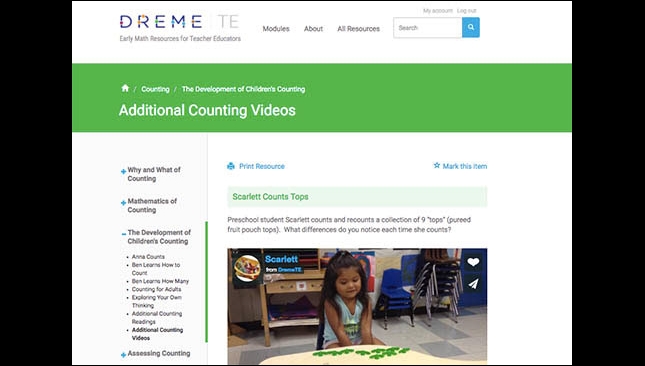
Our work with early childhood teachers spans the formal and informal spaces that young children encounter in early childhood settings. Together, we think about how to leverage the mathematical opportunities within designed activities, as well as throughout daily routines like breakfast and choice time. One classroom activity that we have found to be particularly powerful for both teacher learning and young children’s learning is Counting Collections.
Teachers give children a “collection” of objects to count, oftentimes with quantities that stretch past the boundaries of what we would typically give at this age. Children count and organize the collection in ways that make sense to them and create a written recording of their collection. Teachers and children together work on the development of the counting principles as well as organization, sorting, grouping, and representation.
Another activity is called Describe, Draw, Describe (DDD) and builds spatial reasoning and language as children notice and articulate what they see, and respond to purposeful teacher follow-up questions that elicit more thinking.
Our Featured Videos
We’re excited to feature videos from six of the teachers who have participated in our professional development project over the past few years — three from Southern California and three from Northern California. These videos illustrate a variety of ways in which teachers thoughtfully engage young children in mathematics throughout the day. Below are featured quotes from each teacher as well as an excerpt of each featured video. We invite you to watch these videos in a variety of learning settings with colleagues.
Exploring Numbers
Learning about counting collections really taught me to stop and observe and build on what each child has. And it’s taught me that not all skills come in a certain order. I’ve learned that these skills are being acquired as they’re learning and all these skills come at different times and in different orders — so I don’t limit the kids. I give them these objects and let them show me what they can do.
~ Natali Gaxiola

Natali’s video introduces what teachers and students do in Counting Collections, highlighting the variety of ways that teachers and students engage in this seemingly simple task. See the different kinds of collections available in her classroom, how young children begin to organize and count them, and how Natali carefully watches what children do before engaging them in follow-up questions (0:25-1:23).
Count With Me
A lot of the time we think that children can’t do something. All you have
to do is give them the opportunity, and they will take it.~ Kathy Conrow
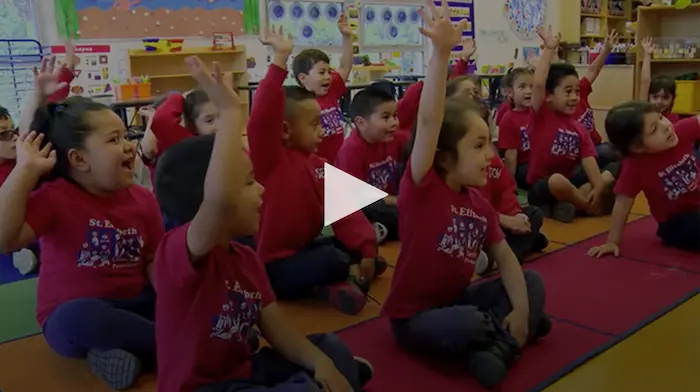
In Crystal’s video, we see a more extended interaction involving the teacher supporting a student counting a larger collection. Notice how Crystal watches the student count a large collection and strategically follows up with a prompt to count the objects into the container, to support continued work on one-to-one correspondence (6:50-8:09).
Math in Informal Spaces
We were able to cover a lot of aspects of math – patterns, quantities, shapes, we did spatial relations. Opportunities are endless when it comes to math. I feel that it is important to see math as a regular subject, not as scary as we think it is. It’s fun!
~ Dolores Torres
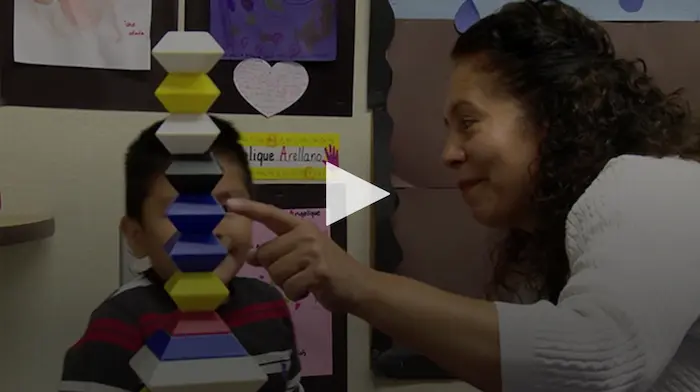
Dolores’ video gives us a vivid example of the varied ways teachers leverage informal opportunities that arise throughout the day to support students’ mathematical understanding. See how Dolores takes up the seemingly simple act of eating apple slices during breakfast time to engage students in counting and operating on number, in English and Spanish! (0:00-1:31)
Count Me In!
It was very interesting to see that – what the kids are thinking. I think
it was really something I wasn’t expecting to happen.~ Miroslava Salmeron
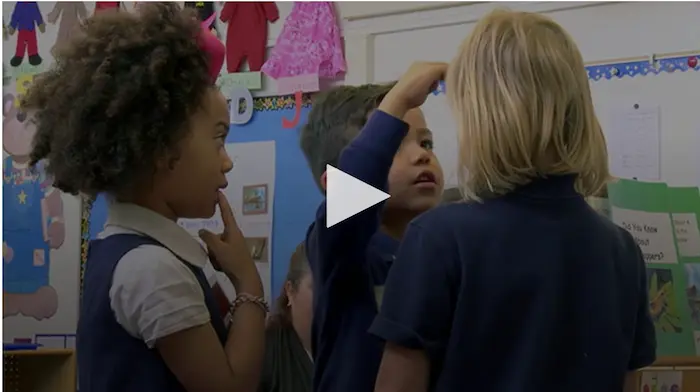
Miroslava illustrates how bringing a mathematical lens to children’s play provides opportunities to recognize and extend the mathematics in everyday situations. Watch and notice the variety of situations around the classroom in which children are playing and how Miroslava asks just a quick question to highlight the mathematics (5:25-6:07).
Spatial Relations in Early Math
Questioning is one of the most difficult things that you learn to do as a teacher… It’s a skill that develops over time, but the most important part of questioning is just sitting and listening to the children.
~ Allyson Krogmann Jordan
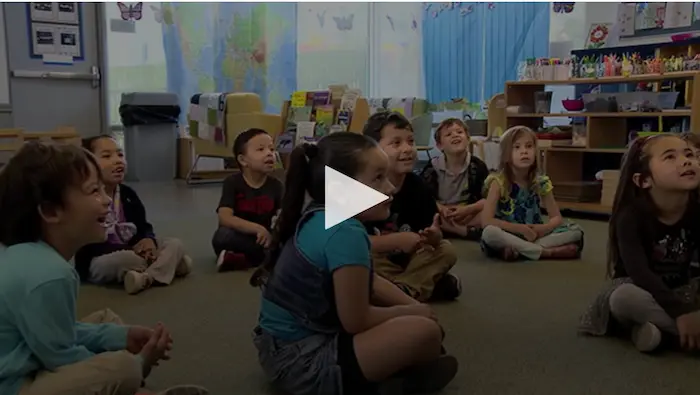
In Allyson’s video, we see an example of the ways in which teachers engage with students to build spatial reasoning within the activity of Describe, Draw, Describe. Watch how Allyson asks purposeful questions to support students to use descriptive language to talk about the positions of objects in relation to each other (2:27-4:10).
Collectively, these videos illustrate that young children are capable of engaging in powerful mathematics. Within both planned and spontaneous learning opportunities, the details of what they say and do reveal that each child brings mathematical knowledge into school. For more ideas about how young children think about mathematics and how early childhood educators can support teachers to draw on children’s mathematical thinking in early childhood classrooms, visit the DREME TE website.






